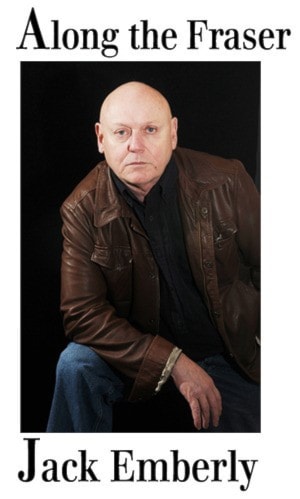Former assistant deputy minister of Fisheries and Oceans Canada John Davis was well into his expert testimony to the Cohen Inquiry in May when he touched on the crucial problem with the DFO’s wild salmon policy: we need a lot more talk about who makes decisions that we all have to live with.
Sounds like the HST story over again, doesn’t it?
“For your discussions of wild salmon policy, Mr. Commissioner,” suggested Davis, who retired in 2008, but remained a key policy advisor into 2010, “this is a very important point because basically here you’re dealing with decisions about weak stock management, how you weigh these sorts of things, and how we make societal decisions with respect to the tradeoffs and the impacts of such things, and I would very much like to talk more about this type of thing as we proceed.”
Weigh things, societal decisions, tradeoffs? We’re talking about measuring the value of biodiversity in salmon sub-groups against the economic costs associated with preserving them; about the cultural importance of salmon to First Nations People, and you and I.
So, why did it take so long for someone in the DFO to say the people most affected by their decisions should have a say in them? Decisions like these: DFO, mandated to protect wild salmon, takes on a second role – support the fish farm industry.
The “only source of fresh salmon all year round” has a proven history of disease anywhere it’s been introduced. Ours farms are sited in the path of migrating Fraser sockeye. Norwegian scientists told Cohen that’s a bad idea. They don’t allow their farms near sensitive salmon runs.
There’s more. DFO decided, without asking you and me, not to test Atlantic farm fish for disease, and advised the industry not to volunteer testing because it wouldn’t be in its best interest.
With the arrival of our fish farms, wild sockeye carrying a pre-mortality genetic signature associated with weakened immune systems (scientist, Dr. Kristi Miller) began to die in huge numbers before reaching spawning grounds, (90 per cent in 2009). The DFO has failed to assure funding for Dr. Miller’s ground-breaking research. You’d think they’d be jumping up and down with excitement.
Furthermore, DFO decided Dr. Miller won’t talk to the also “muzzled” press, who have all but given up trying to reach a live DFO spokesman on the phone. The DFO decided what we hear must come from “strategic media representatives” in their “media lines” department.
But, finally, one senior DFO advisor suggests we talk about how we make decisions.
Like the DFO decision, perhaps, not to list Cultus Lake sockeye under the Species at Risk Act.
Stock status report 2003/2004 (Fisheries and Oceans) pertains to this unique subset of sockeye harvested by the Soowahlie First Nations, “for thousands of years.” Spawning populations averaged 20,000 adults between 1920 and 1960. Then began a steady decline – habitat destruction, over-fishing, climate change, and the “pre-spawning mortality,” associated with the virus Dr. Miller identified, but can’t talk about.
In the year, 2000, the number of Cultus spawners plummeted 93 per cent to a record low 515 fish. The Soowhalie urged DFO to act, fearing the fish faced extinction. Finally, DFO considered the obvious question: should this irreplaceable sockeye, found in Cultus Lake, but no where else in the world, be listed on the Species at Risk Act?
The Committee on the Status of Endangered Wildlife in Canada was subsequently charged with investigating. It conducted a “scientific assessment in mid 2003,” said Davis, then suggested listing Cultus sockeye under SARA. If listed, Dr. Davis explained, the minister would have been compelled to begin a restoration program. Dr. Davis told Cohen, “you cannot kill, harass, destroy the habitat of, possess a listed species …”
But, listing didn’t happen because DFO decided to advise Environment Canada, the ministry responsible for SARA (and its recently slashed funding) not to list them. EC, complied. Cultus Lake sockeye are not endangered. DFO decided that.
Dr. Davis told Cohen we need time to assess “socioeconomic” factors like the overall impact on the economy of closing a fishery. By the way, the B.C. Government favored not listing, for “economic” concerns, and were relieved when it didn’t happen. We learned this during the testimony of Dr. Davis. Time won for consideration of economic factors may prove to be more than Cultus Lake sockeye have on this planet.
SARA, charged with listing species at risk on the basis of biodiversity, cultural, and aesthetic values alone could have assured wild salmon would be with us forever. Perhaps the latest victim of muzzling, it must now consider the economic implications of listing a species, weigh the overall costs and benefits. Questions like, what’s the value of 515 sockeye compared to the millions produced by an industry that provides 73 per cent of salmon in supermarkets?
“When is the likely economic impact of listing too high so that the listing should not be recommended?” asked Dr. Davis.
Some us of might say, never.
At any rate, the DFO should not make another societal decision without public approval. Any “smoking gun” we uncover will have its fingerprints on it.
Like the Sorcerer’s Apprentice, DFO experimented arrogantly in private, and created chaos it would never have foreseen without open discussion with its masters. That approach toppled the HST, and it will change DFO’s wild salmon policy.
Jack Emberly is a retired teacher, local author and environmentalist.
